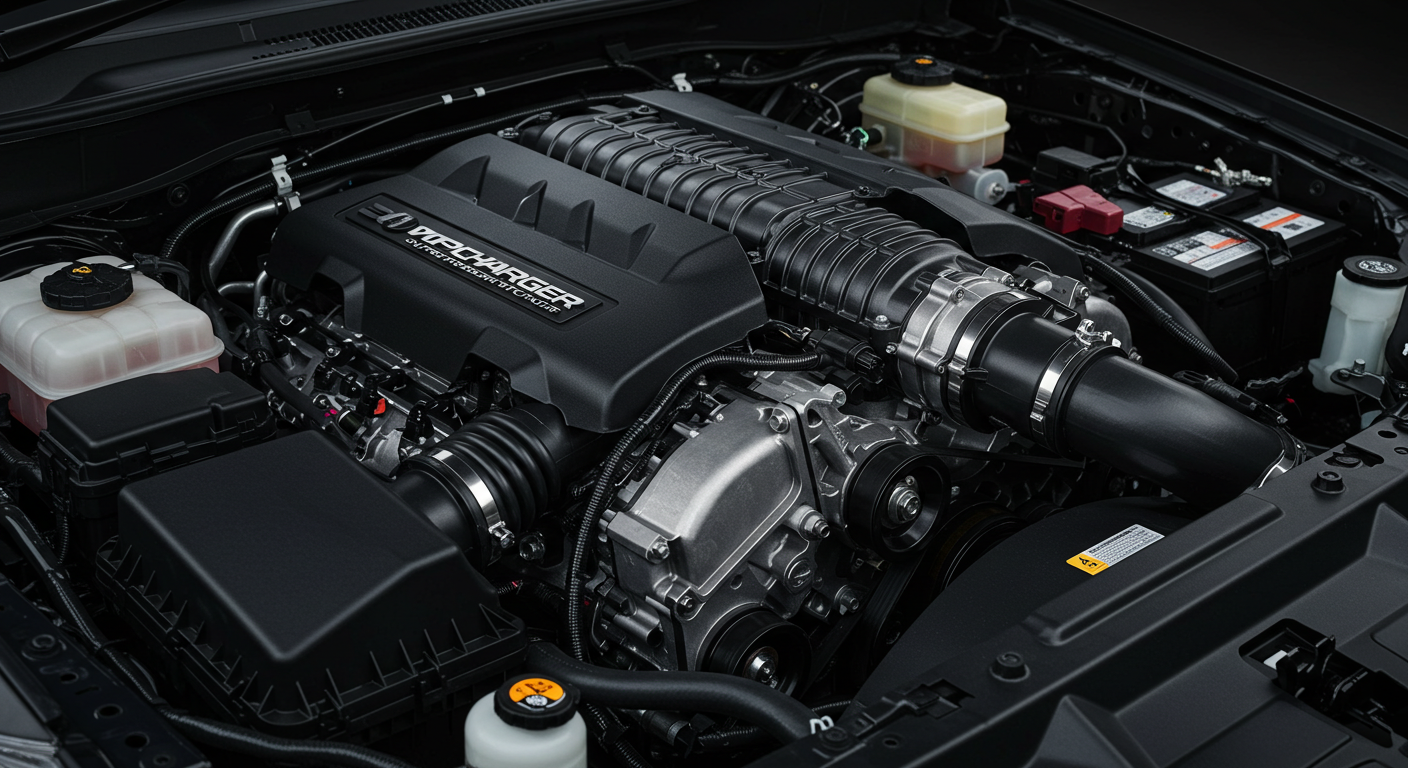Introduction to Anti-Theft Technology
In recent years, the prevalence of car theft has become a significant concern for vehicle owners, insurance companies, and law enforcement agencies. With millions of vehicles stolen each year, the need for effective anti-theft technology has never been more critical. This rising trend in automotive theft not only impacts the financial stability of car owners but also affects overall crime statistics and has prompted insurance premiums to increase. Therefore, understanding the array of anti-theft technologies available is essential for ensuring vehicle security.
Anti-theft technology encompasses various systems integrated into vehicles to deter, detect, and respond to theft attempts. These systems range from traditional methods, such as steering wheel locks, to advanced electronic solutions, including GPS tracking devices and immobilizers. The latter technologies are quickly gaining traction due to their efficiency and effectiveness in protecting cars from theft. They offer features such as real-time tracking, which allows owners to pinpoint the location of their vehicle in the event of a theft.
The importance of adopting anti-theft measures cannot be overstated. Not only does effective technology provide peace of mind to car owners, but it also minimizes the risk of financial loss associated with vehicle theft. Many insurance companies recognize the value of implementing such technologies and often provide incentives or discounts for vehicles equipped with advanced anti-theft systems. As a result, understanding the various options available is crucial for both protection and financial savings, creating a compelling case for the integration of anti-theft technology in modern vehicles.
Types of Anti-Theft Systems
Anti-theft systems play a crucial role in protecting vehicles from theft, providing various solutions tailored to different security needs. Among the most common types of anti-theft systems are alarm systems, immobilizers, GPS tracking devices, and steering wheel locks. Each of these systems operates differently, offering unique advantages and disadvantages.
Alarm systems are perhaps the most recognizable form of vehicle security. They are typically triggered by unauthorized access or movement, sounding an audible alarm that can deter thieves and alert nearby individuals. While effective in intimidating potential car thieves, their main disadvantage is that bystanders may often ignore alarming sounds, reducing their efficiency. Nevertheless, they serve as a valuable deterrent and can provide peace of mind for vehicle owners.
Immobilizers function by disabling the vehicle’s engine unless the correct key or fob is present. This system works silently and effectively, preventing the engine from starting if an unauthorized attempt is made. The primary advantage of immobilizers is their ability to offer a robust layer of security without the attention that alarm systems attract. However, their drawback lies in potential challenges for vehicle owners, such as inadvertently locking themselves out if a key fob fails.
GPS tracking devices have gained popularity due to their capability to provide real-time location data. These devices allow vehicle owners to monitor their car’s whereabouts through a smartphone app or web platform. In case of theft, the stolen vehicle can be tracked and potentially recovered. On the downside, GPS systems require a power source and might be vulnerable to tampering.
Lastly, steering wheel locks serve as a physical barrier to theft. These devices are mounted onto the steering wheel, preventing it from being turned. While they are quite visible and can discourage thieves, they can be cumbersome to use and easily bypassed by determined criminals. Each type of anti-theft system offers varying levels of protection, and often, a combination of these systems yields the best results for ensuring vehicle security.
How Modern Car Security Systems Work
Modern car security systems have evolved significantly, incorporating a myriad of technological advancements designed to enhance vehicle protection against theft. At the core of these advanced systems is sensor technology, which includes motion detectors, vibration sensors, and door/window sensors. These components work collaboratively to create a comprehensive monitoring network that can detect unauthorized access or suspicious activity around the vehicle. When a sensor is triggered—such as a door being forced open or unusual movement detected near the vehicle—it sends an immediate alert to the system’s central controller.
Another key element of modern car security is remote monitoring. Many contemporary vehicles are equipped with integrated communication systems that allow owners to monitor their cars from a distance using a smartphone or other devices. Through dedicated applications, vehicle owners can receive real-time updates and notifications if their car’s security system is activated. This technology not only provides peace of mind but also allows for prompt response actions, mitigating potential theft opportunities. As an example, if an unauthorized entry is detected, the system can send an alert directly to the owner’s smartphone, enabling them to inform local authorities quickly.
Connectivity features play an increasingly vital role in modern car security systems. Most contemporary systems utilize cellular networks or GPS connectivity to enhance their functionality. For instance, many vehicles now come equipped with GPS tracking systems that can provide precise location data in the event of theft. This information is invaluable for law enforcement agencies, allowing them to quickly locate and recover stolen vehicles. Furthermore, the integration of cloud technology allows for continuous updates and improvements to security protocols without the need for physical modifications to the vehicle.
In summary, the combination of sophisticated sensor technology, remote monitoring capabilities, and connectivity features constitutes the backbone of modern car security systems. By integrating these elements, these systems significantly enhance a vehicle’s ability to deter theft, detect unauthorized access, and notify the owner or authorities in real-time, ultimately ensuring a higher level of vehicle security.
GPS Tracking Systems: An Essential Tool
GPS tracking systems have emerged as a crucial component in the realm of anti-theft technology for vehicles. These systems utilize global positioning satellites to provide real-time tracking of a vehicle’s location, enabling quicker recovery in the unfortunate event of theft. When a vehicle is stolen, the owner can access location data through a smartphone or computer, allowing law enforcement to intercept the vehicle promptly.
There are primarily two types of GPS trackers: hidden and visible. Hidden trackers are discreetly installed in various locations within the vehicle, making them difficult for thieves to detect. Conversely, visible trackers are often mounted on the exterior of the vehicle, serving as a deterrent against theft due to their easily recognizable presence. Both types boast a range of features, such as geofencing, which sends alerts when the vehicle moves outside designated boundaries, and real-time tracking updates that provide precise location information at any given moment.
Furthermore, many GPS tracking systems offer subscription services that provide additional functionalities, including driving history, maintenance alerts, and integration with other vehicle security systems. When choosing a GPS tracking system, it is essential for vehicle owners to consider their specific needs, such as budget, subscription costs, and the level of detail provided by the tracking service. Reading user reviews and comparing features can aid in selecting an appropriate system that aligns with individual requirements.
Overall, the effectiveness of GPS tracking systems in recovering stolen vehicles cannot be overstated. According to various studies, equipped vehicles are more likely to be recovered, significantly reducing the financial and emotional impact of vehicle theft. Hence, investing in a reliable GPS tracking system is a proactive measure that car owners can take to safeguard their vehicles from theft.
Advantages and Disadvantages of Anti-Theft Technologies
The implementation of anti-theft technologies in vehicles presents both notable advantages and significant disadvantages. On the one hand, these technologies provide enhanced security that can deter theft and unauthorized access. Many modern anti-theft systems incorporate alarm mechanisms, GPS tracking, and immobilization features, making it considerably challenging for thieves to steal vehicles successfully. The psychological impact on car owners is equally important; the presence of anti-theft technology can instill a sense of security. Owners are often more confident leaving their vehicles in public spaces, knowing that they have taken proactive measures to protect their investments.
However, these advantages come with associated costs. The initial installation of advanced anti-theft systems can be notably expensive, depending on the complexity and features involved. This cost factor may deter some car owners from investing in these technologies, especially if they perceive the risk of theft to be low in their area. Furthermore, while the deterrent effect is significant, it is essential to recognize the limitations of certain technologies. For example, older systems may become outdated, making them vulnerable to new techniques employed by thieves, or they might not be as effective in densely populated urban areas where the sophistication of criminals can be higher.
Additionally, potential pitfalls exist. The reliability of anti-theft technologies can vary, and issues such as battery failures or system malfunctions can render them ineffective when needed most. Moreover, sophisticated hacking techniques have emerged, allowing knowledgeable thieves to bypass some security measures. Therefore, while anti-theft technologies can serve as a valuable deterrent, it is crucial for car owners to perform thorough research and consider their specific circumstances before making a decision. Evaluating the balance between security investment and potential vulnerabilities is essential for informed decision-making.
DIY vs. Professional Installation: What to Choose?
When considering anti-theft technology for cars, one of the crucial decisions is whether to undertake a DIY installation or to hire a professional. Both options have their distinct advantages and disadvantages, which should be carefully evaluated based on individual circumstances.
DIY installation can be appealing due to the potential cost savings. Many car owners opt for this route to save on labor costs associated with hiring a professional. Moreover, various resources such as instructional videos and manuals are widely available, enabling individuals to acquire the necessary skills for installation. However, it is vital to recognize that a lack of expertise might lead to improper installation, which can compromise the effectiveness of the anti-theft system. This uncertainty can negate the benefits of saving money if the system fails to perform as expected.
On the other hand, hiring a professional to install anti-theft technology ensures that the system is integrated correctly. Professionals bring expertise and experience, which significantly enhances the effectiveness of the installed system. Furthermore, many reputable automotive service providers offer warranties on their installations, providing peace of mind that any issues encountered post-installation will be addressed without additional costs. However, this service does come at a premium. The initial investment may be greater, but it can be justified by the long-term reliability of the system.
Ultimately, the choice between DIY and professional installation depends on the individual’s comfort level with technical tasks, budget constraints, and the value placed on reliability. Those who possess mechanical skills and seek a budget-friendly option might lean towards DIY, while others prioritizing assurance and effectiveness may find professional installation to be a worthwhile expenditure.
Cost of Anti-Theft Systems: Budgeting for Security
When considering the implementation of anti-theft technology for automobiles, it is essential to assess the associated costs carefully. The price of such systems can vary significantly based on the complexity and features offered. Generally, basic immobilizer systems can range from $100 to $500, while more advanced options, such as GPS tracking devices and alarm systems, can cost between $500 and $2,000. The installation fees can vary further, potentially adding an additional $100 to $300 depending on the sophistication of the technology and the expertise of the installer.
Insurance considerations also play a crucial role in budgeting for anti-theft systems. Many insurance providers offer discounts for vehicles equipped with advanced security features. These discounts can result in savings of up to 15% on premiums, culminating in substantial long-term savings for car owners. It is advisable for vehicle owners to consult with their insurance agents to understand specific requirements and potential benefits from installing anti-theft devices.
Moreover, some vehicle manufacturers incorporate advanced anti-theft technology as standard features in higher-end models. As such, investing in a newer model equipped with advanced security features may reduce the need for aftermarket anti-theft systems, thereby lowering overall expenditures. However, for those with older vehicles, retrofitting with modern security options becomes essential for safeguarding against theft.
To ensure optimal value, consumers should conduct thorough research on various anti-theft systems and consider their unique needs and local crime rates. Budgeting accurately for these systems not only enhances the security of the vehicle but may also yield significant savings on insurance and the potential loss of property due to theft.
Maintaining Your Anti-Theft System
To ensure the effectiveness of any anti-theft system installed in your vehicle, routine maintenance and checks are essential. Regular inspections can prevent problems and enhance your system’s performance. It is important to conduct these checks at least twice a year or prior to any long trips.
One of the fundamental aspects of maintaining your anti-theft system is checking its software for updates. Manufacturers often release software updates to enhance performance, fix glitches, or improve security features. Keeping your anti-theft system up-to-date not only protects your vehicle but also ensures that it operates smoothly. This includes checking the firmware of vehicle alarms, immobilizers, and GPS tracking systems, to name a few.
Another vital area to address is the condition of the batteries that power the anti-theft devices. Battery life can diminish over time; thus, it is crucial to replace or recharge batteries according to the manufacturer’s recommendations. This applies to key fobs, alarm systems, and wireless sensors. A system powered by low or dead batteries may fail to respond effectively when needed, leaving your car vulnerable to theft.
In addition to these proactive measures, it is advisable to familiarize yourself with troubleshooting common issues. For example, a car alarm may go off without cause or not activate upon attempting to lock the car. Understanding how to reset or reprogram these systems can save considerable time and stress. Refer to the manufacturer’s manual for guidance, or consult with reputable automotive experts if problems persist.
Finally, maintaining clear communication with your anti-theft system provider ensures that you receive assistance whenever necessary. Taking these steps to regularly maintain and monitor your anti-theft systems will significantly mitigate the risk of theft and provide peace of mind while you are on the road.
Future Trends in Anti-Theft Technology
The automotive industry is witnessing an evolution in anti-theft technology driven by advancements in various fields, including biometric security, artificial intelligence (AI), and connected car technology. These innovations are set to transform vehicle security, aiming to offer more effective solutions for protecting cars against theft.
One major trend is the integration of biometric security systems, which utilize fingerprint, facial recognition, or iris scanning technologies to authenticate users. This shift towards biometric solutions enhances vehicle access security significantly by ensuring that only authorized individuals can operate the vehicle. Unlike traditional key systems, which can be easily duplicated or compromised, biometric authentication provides a higher level of security and creates a personalized experience for the driver.
In addition to biometric technologies, the utilization of artificial intelligence in anti-theft systems is emerging as a game-changer. AI algorithms can analyze patterns and detect unusual behavior, thereby identifying potential threats more swiftly and accurately. For instance, AI-powered tools can learn the regular driving patterns of vehicle owners and alert them if their car deviates from those patterns, indicating possible theft attempts. This proactive approach enables quicker response times when dealing with potential breaches.
Moreover, the incorporation of connected car technology is expected to play a crucial role in future anti-theft mechanisms. Vehicles connected to the Internet can leverage real-time data to monitor their surroundings and maintain constant communication with the owners. This connectivity will allow for features such as remote locking and unlocking, location tracking, and instant alerts sent to owners in case of unauthorized access. The development of blockchain technology may further enhance data security, ensuring that vehicle information remains secure and tamper-proof.
As manufacturers continue to invest in these advanced technologies, the market for anti-theft systems is likely to grow, making vehicles safer for consumers. By embracing these innovations, automakers are not only enhancing the security of their vehicles but also increasing consumer confidence in automotive safety.











